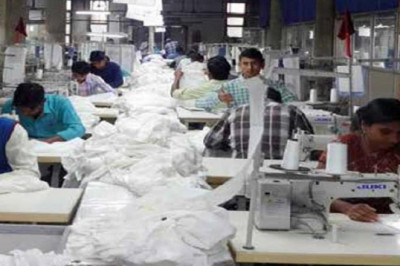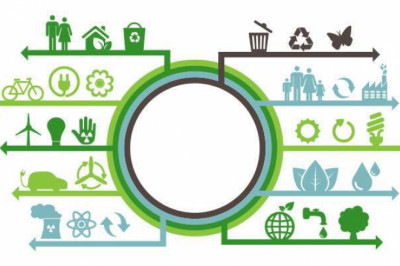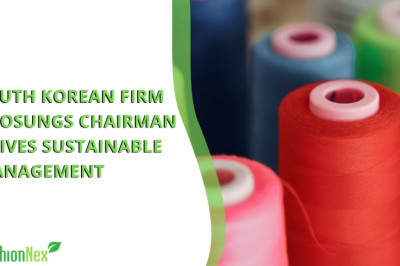views

Fashion's Carbon Footprint: How to Reduce Your Style's Impact
In recent years, conversations surrounding sustainability have permeated various industries, and fashion is no exception. From production to distribution to disposal, the fashion industry has a significant environmental impact, contributing to pollution, resource depletion, and greenhouse gas emissions. In fact, according to the United Nations Environment Programme, the fashion industry accounts for about 10% of global carbon emissions, making it one of the most polluting industries worldwide.
The Carbon Footprint of Fashion
Understanding the carbon footprint of fashion requires examining the entire lifecycle of a garment, from its creation to its eventual disposal. The process begins with the extraction of raw materials, such as cotton, wool, and synthetic fibers, which often involves intensive farming practices, deforestation, and water consumption. These materials are then transported to manufacturing facilities, where they are processed into textiles and assembled into garments.
The manufacturing phase of fashion production is particularly energy-intensive, relying heavily on fossil fuels for powering machinery and equipment. Additionally, chemical treatments and dyeing processes contribute to water pollution and greenhouse gas emissions. Once garments are produced, they are shipped to distribution centers and retail stores, further increasing their carbon footprint through transportation emissions.
After consumers purchase clothing items, the environmental impact continues as they are laundered, maintained, and eventually discarded. Washing and drying clothes consume energy and water, while frequent washing can degrade the quality of garments, leading to faster disposal. When clothing reaches the end of its life cycle, it often ends up in landfills, where it decomposes and releases methane, a potent greenhouse gas.
Reducing Fashion's Carbon Footprint
Given the significant environmental impact of the fashion industry, consumers and industry stakeholders alike have a responsibility to minimize their carbon footprint and adopt more sustainable practices. Here are some strategies for reducing fashion's environmental impact:
Choose Quality Over Quantity: Instead of buying cheap, fast-fashion items that quickly wear out and contribute to waste, opt for high-quality garments that are durable and long-lasting. Investing in timeless pieces that can be worn for years reduces the need for frequent replacements.
Embrace Sustainable Fabrics: Look for clothing made from eco-friendly materials such as organic cotton, hemp, bamboo, and recycled fibers. These materials have lower environmental impacts compared to conventional fabrics and often require fewer resources to produce.
Support Ethical Brands: Research fashion brands that prioritize sustainability, transparency, and ethical labor practices. Choose companies that use environmentally friendly production methods, pay fair wages to workers, and minimize their carbon footprint throughout the supply chain.
Practice Minimalism: Adopt a minimalist approach to fashion by curating a capsule wardrobe of versatile, essential pieces that can be mixed and matched to create various outfits. By focusing on quality over quantity and avoiding impulse purchases, you can reduce your overall consumption and environmental impact.
Extend the Lifespan of Clothing: Take care of your clothes by following proper laundering instructions, repairing damaged items, and storing them correctly. By extending the lifespan of garments, you can minimize the need for replacements and reduce waste.
Explore Secondhand and Vintage Shopping: Instead of buying new clothing, consider shopping for secondhand or vintage items. Thrift stores, consignment shops, and online resale platforms offer a wide selection of pre-loved clothing at affordable prices, reducing the demand for new production.
Reduce Water and Energy Usage: Conserve resources by washing clothes in cold water, air-drying them whenever possible, and using energy-efficient appliances. By minimizing water and energy consumption, you can lower the environmental impact of laundering clothes.
Recycle and Upcycle: Instead of throwing away old clothing, explore recycling and upcycling options. Donate gently used items to charity, participate in clothing swaps, or repurpose old garments into new creations. By giving clothing a second life, you can reduce waste and minimize your carbon footprint.
Advocate for Change: Use your voice to advocate for sustainability and transparency in the fashion industry. Support initiatives that promote environmental and social responsibility, and urge brands and policymakers to implement policies that prioritize sustainability and reduce fashion's carbon footprint.
Educate Yourself and Others: Stay informed about the environmental impact of fashion and share your knowledge with others. Encourage friends, family, and colleagues to adopt more sustainable fashion practices and make informed purchasing decisions. By raising awareness and inspiring change, you can contribute to a more sustainable future for the fashion industry and the planet.
Conclusion
In conclusion, addressing fashion's carbon footprint requires collective action and commitment from consumers, industry stakeholders, and policymakers. By adopting sustainable fashion practices, supporting ethical brands, and advocating for change, we can reduce the environmental impact of the fashion industry and move towards a more sustainable and equitable future.











Comments
0 comment